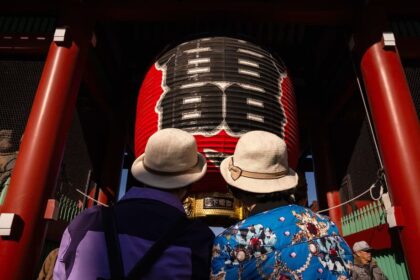Kyoto Botanical Gardens: A Century of Nature and Innovation
In the heart of Kyoto, a city renowned for its ancient temples and cultural heritage, the Kyoto Botanical Gardens stands as a living testament to Japan’s enduring relationship with nature. Established in 1924, this verdant sanctuary is the oldest public botanical garden in the country, home to over 12,000 species and approximately 120,000 individual plants. As the gardens celebrated their 100th anniversary, a groundbreaking event has transformed the way visitors experience plant life: Light Cycles Kyoto, an immersive nighttime journey that fuses art, technology, and the natural world.
- Kyoto Botanical Gardens: A Century of Nature and Innovation
- What is Light Cycles Kyoto?
- Inside the Experience: Four Zones of Wonder
- The Vision Behind Light Cycles Kyoto
- Visitor Experience: Practical Information and Highlights
- Community Impact and Reception
- Art, Science, and the Future of Botanical Gardens
- In Summary
Light Cycles Kyoto is not just an exhibition—it is a sensory exploration that invites guests to see, hear, and feel the hidden rhythms of the plant kingdom. By opening the Conservatory after dark and filling it with dynamic light, sound, and projection, the event offers a rare opportunity to witness the gardens in a completely new light, both literally and figuratively.
What is Light Cycles Kyoto?
Light Cycles Kyoto is an immersive multimedia experience created by the acclaimed Canadian studio Moment Factory. Known for their innovative work blending video, lighting, architecture, and sound, Moment Factory has brought their expertise to Kyoto in collaboration with local partners, including Kyoto Prefecture and Mitsui Fudosan Co. The event is designed to celebrate the centennial of the Kyoto Botanical Gardens and to foster a deeper connection between people and the natural world.
The experience takes place entirely within the Conservatory, a striking greenhouse whose silhouette evokes the iconic Kinkakuji temple and the Kitayama mountain range. This third-generation structure, opened in 1992, houses about 25,000 plants representing 4,500 species. The Conservatory’s step-free, circuitous pathway allows visitors to move seamlessly through a succession of botanical environments, each transformed by the interplay of light and sound.
According to the organizers, the event aims to “visualize the voices” of plants at night—an attempt to reveal the unseen and unheard aspects of plant life that are often overlooked during the day. By doing so, Light Cycles Kyoto hopes to inspire a new appreciation for biodiversity and the intricate relationships that sustain our natural world.
Inside the Experience: Four Zones of Wonder
The journey through Light Cycles Kyoto unfolds across four distinct zones, each offering a unique perspective on the hidden life of plants. These installations are not only visually stunning but also thematically rich, drawing on both scientific concepts and Japanese cultural motifs.
Light Will Find You: The Magic of Komorebi
The first zone, Light Will Find You, is inspired by the Japanese word komorebi, which describes the dappled sunlight filtering through tree leaves. Here, artificial light is used to recreate this peaceful, magical phenomenon, casting shifting patterns that break up the darkness and evoke a sense of wonder. The effect is both calming and awe-inspiring, inviting visitors to tune their senses to the subtle interplay of light and foliage.
Memory of Water: The Vital Stream
Water is the lifeblood of any ecosystem, and the second zone, Memory of Water, pays tribute to its essential role. Through the use of light waves, projections, and the sounds of thunder and rain, this installation immerses guests in the sights and sounds of flowing water. The experience serves as a reminder of water’s importance to both plant and human life, highlighting the interconnectedness of all living things.
Invisible: Unseen Patterns and Hidden Rhythms
The third zone, Invisible, explores the world of light frequencies that are beyond human perception. By manipulating color, rhythm, and movement, the installation reveals patterns and signals that plants use to communicate and interact with their environment. This playful, thought-provoking space encourages visitors to consider the many ways in which life communicates, often in ways we cannot see or hear.
Forest Frequencies: Nature’s Symphony
The final zone, Forest Frequencies, transforms the Conservatory into a living orchestra. Here, the sounds of nature—rustling leaves, chirping insects, and flowing water—are woven together with vibrant hues and pulsating light. The result is a symphony that celebrates the diversity and harmony of the botanical world, leaving visitors with a sense of calm and connection.
The Vision Behind Light Cycles Kyoto
Light Cycles Kyoto is more than a spectacle; it is a thoughtful meditation on the relationship between people and nature. The event’s focus on biodiversity reflects a growing awareness of the need to protect and cherish the natural world, especially in urban environments where green spaces are increasingly precious.
Moment Factory’s creative director, in collaboration with local partners, sought to create an experience that would resonate with both residents and tourists. By blending cutting-edge technology with the timeless beauty of plants, Light Cycles Kyoto bridges the gap between tradition and innovation. The event also serves as a platform for international collaboration, with teams from Canada, Japan, and Australia contributing their expertise to bring the vision to life.
Kyoto Prefecture and Mitsui Fudosan Co. have played key roles in supporting the event, continuing a legacy that dates back to the gardens’ founding. The Mitsui family, one of Japan’s most prominent merchant families, provided the original donations that made the gardens possible a century ago. Today, their involvement underscores the enduring importance of passing on the wonders of nature to future generations.
Visitor Experience: Practical Information and Highlights
Light Cycles Kyoto is designed to be accessible and enjoyable for a wide range of visitors. The event is held entirely indoors within the Conservatory, making it a comfortable experience regardless of weather conditions. The pathway is step-free and circuitous, ensuring that guests of all ages and abilities can participate.
The event runs from late May through the end of March the following year, with opening hours adjusted seasonally. From May to August, the experience is open from 7:00 p.m. to 9:30 p.m. (last entry at 8:30 p.m.), while from September to March, it opens at 6:00 p.m. and closes at 9:30 p.m. The journey through the installations typically takes about 45 minutes, but there is no strict time limit, allowing guests to linger and absorb the atmosphere at their own pace.
Tickets are date and time-specific, with advance purchase recommended due to the event’s popularity. Prices for high school students and older are 2,300 yen in advance (2,500 yen on the day), while tickets for elementary and junior high school students are 1,100 yen in advance (1,200 yen on the day). Children under elementary school age may enter for free, but must be accompanied by an adult. Tickets can be purchased through the official event website, and advance tickets can be rescheduled up to three times, subject to availability.
Access to the Kyoto Botanical Gardens is convenient via public transportation. The Kitayama Gate is directly accessible from Kitayama Station on the Karasuma Subway Line, while the Main Gate is a 10-minute walk from Kitaoji Station. Several bus routes also serve the area, and limited parking is available for a fee. Organizers recommend using public transport due to the expected crowds.
Visitors are encouraged to take photos (without flash or tripods), but commercial photography and the use of drones are prohibited. The event features flashing lights and loud sound effects, so those with sensitivities should take note. A dedicated shop offers exclusive merchandise inspired by the gardens’ history and plant life, while a food area showcases local vendors from the Kitaohji and Kitayama shopping districts.
Community Impact and Reception
Light Cycles Kyoto has quickly become a highlight of the city’s cultural calendar. When a similar event was held for just two months during the gardens’ centennial celebrations, annual visitor numbers exceeded 900,000 for the first time in three decades. The current, extended run is expected to attract even more guests, both from Kyoto and beyond.
Feedback from attendees has been overwhelmingly positive. A university student from Kyoto, visiting for the first time in a decade, shared her impressions:
“The combination of light, sound and plants was impressive. It felt like a fresh experience.”
Such responses reflect the event’s success in offering something truly new, even to those familiar with the gardens. By transforming a familiar space into a realm of wonder, Light Cycles Kyoto encourages both locals and tourists to see the natural world with fresh eyes.
Art, Science, and the Future of Botanical Gardens
Light Cycles Kyoto stands at the intersection of art, science, and environmental stewardship. By using technology to reveal the hidden dynamics of plant life, the event highlights the importance of biodiversity and the need to protect our natural heritage. It also demonstrates how public spaces can be reimagined to foster curiosity, learning, and a sense of community.
The event’s focus on “visualizing the voices” of plants draws on recent scientific research into plant communication. While plants do not have voices in the human sense, they interact with their environment through chemical signals, electrical impulses, and even subtle vibrations. By translating these invisible processes into light and sound, Light Cycles Kyoto offers a poetic interpretation of the ways in which all life is interconnected.
As cities around the world grapple with the challenges of urbanization and climate change, events like Light Cycles Kyoto serve as reminders of the value of green spaces. Botanical gardens are not only repositories of plant diversity but also vital centers for education, conservation, and cultural exchange. By engaging the public in new and creative ways, they can inspire the next generation to care for the planet.
In Summary
- Light Cycles Kyoto is an immersive nighttime event at the Kyoto Botanical Gardens, Japan’s oldest public botanical garden.
- The experience, created by Moment Factory, uses light, sound, and projection to reveal the hidden life of plants across four themed zones.
- The event celebrates the gardens’ 100th anniversary and aims to foster a deeper connection between people and nature.
- Visitors journey through installations inspired by Japanese culture and scientific concepts, including komorebi and plant communication.
- Light Cycles Kyoto is accessible, family-friendly, and held indoors, making it suitable for all weather conditions.
- Tickets are available online, with advance purchase recommended due to high demand.
- The event has been widely praised for its innovative approach and positive impact on community engagement with nature.
- Light Cycles Kyoto exemplifies how art and technology can be harnessed to promote environmental awareness and appreciation for biodiversity.


![[京都府立植物園]で幻想的なアートナイトイベント 『LIGH…](https://asiadaily.org/wp-content/uploads/2025/07/250625-lightcycle-2-1024x682-1-920x682.jpg)









